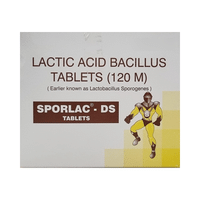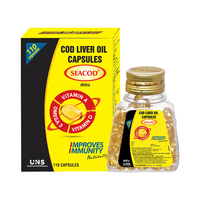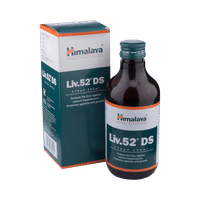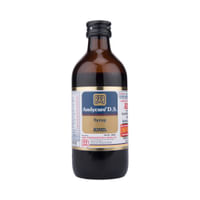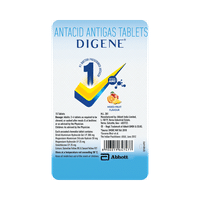Apentral C 3mg/40mg Tablet

Rs.87.30for 1 strip(s) (10 tablets each)
food interaction for Apentral C
alcohol interaction for Apentral C
pregnancy interaction for Apentral C
lactation interaction for Apentral C
food
alcohol
pregnancy
lactation
Apentral C 3mg/40mg Tablet is to be taken empty stomach.
Take it preferably 30 minutes before food.
None
Take it preferably 30 minutes before food.
None
CAUTION
Caution is advised when consuming alcohol with Apentral C 3mg/40mg Tablet. Please consult your doctor.
CAUTION
Information regarding the use of Apentral C 3mg/40mg Tablet during pregnancy is not available. Please consult your doctor.
CONSULT YOUR DOCTOR
Information regarding the use of Apentral C 3mg/40mg Tablet during breastfeeding is not available. Please consult your doctor.
CONSULT YOUR DOCTOR
SALT INFORMATION FOR Apentral C
Cinitapride(3mg)
Uses
Cinitapride is used in the treatment of gastroesophageal reflux disease (acid reflux) and indigestion.
How it works
Cinitapride indirectly stimulates the release of acetylcholine, a chemical messenger that can increase the motility of the intestine.
Common side effects
Diarrhea, Sedation, Tardive dyskinesia, Arrhythmia (irregular heartbeats), Breast enlargement in male, Itching, Rash, Angioedema (swelling of deeper layers of skin), Extrapyramidal symptoms
Pantoprazole(40mg)
Uses
Pantoprazole is used in the treatment of heartburn, gastroesophageal reflux disease (acid reflux) and peptic ulcer disease.
How it works
Pantoprazole is a proton pump inhibitor (PPI). It works by reducing the amount of acid in the stomach which in turn relieves acid-related indigestion and heartburn.
Common side effects
Diarrhea, Flatulence, Headache, Nausea, Vomiting, Dizziness, Abdominal pain, Blurred vision, Constipation, Joint pain, Injection site reaction, Edema (swelling), Dryness in mouth, Hepatitis (viral infection of liver), Decreased white blood cell count, Low blood platelets, Rash, Red spots or bumps, Fundic gland polyps, Jaundice, Systemic lupus erythematosus, Clostridium difficile associated diarrhea, Change in body weight, Increased triglyceride level in blood, Rhabdomyolysis
SUBSTITUTES FOR Apentral C
5 Substitutes
5 Substitutes
Sorted By
 Rs. 281pay 212% more per Tablet
Rs. 281pay 212% more per Tablet Rs. 193pay 114% more per Tablet
Rs. 193pay 114% more per Tablet Rs. 250pay 177% more per Tablet
Rs. 250pay 177% more per Tablet Rs. 200pay 122% more per Tablet
Rs. 200pay 122% more per Tablet Rs. 190pay 111% more per Tablet
Rs. 190pay 111% more per Tablet
Expert advice FOR Apentral C
- Cinitapride helps treat gastroesophageal reflux disease (acid reflux) and indigestion.
- Take it 15 minutes before each meal.
- Use caution while driving or doing anything that requires concentration as Cinitapride can cause dizziness and sleepiness.
- Inform your doctor if you get watery diarrhea, fever, or stomach pain that does not go away.
- Do not consume alcohol while taking Cinitapride as it can increase dizziness and the risk of stomach damage.
Frequently asked questions FOR Apentral C
Cinitapride
Q. What is Cinitapride is used for?
Cinitapride is used for the treatment of motility-related gastrointestinal disorders like indigestion, reflux disease, delayed gastric emptying and vomiting
Q. How does Cinitapride work?
Cinitapride works by increasing the movement of esophagus, stomach, and intestines during digestion. It also increases the strength of muscle between esophagus and stomach to prevent reflux conditions.
Q. Why is Cinitapride used with rabeprazole for some conditions?
Cinitapride increases the movement of the gut and is useful in the treatment of conditions like heartburn, dyspepsia and is also useful in the treatment of reflux esophagitis. It has much better efficacy when it is used with rabeprazole.
Pantoprazole
Q. What is Pantoprazole used for?
Pantoprazole is used for the treatment of peptic ulcer disease, reflux esophagitis or gastroesophageal reflux disease (GERD). Pantoprazole prevents acidity associated with use of painkillers. It is also used to treat a disease associated with excessive acid production in the stomach known as Zollinger Ellison syndrome (ZES). It works by reducing the amount of acid made by your stomach and thus relieves your symptoms.
Q. How long does it take for Pantoprazole to work?
You should start to feel better within 2 to 3 days. It may take up to 4 weeks for Pantoprazole to work properly so you may still have some symptoms during this time.
Q. Is Pantoprazole safe?
Yes, Pantoprazole is relatively safe. Most of the people who take Pantoprazole do not get a side effect. It is advised to be taken as directed by the doctor for maximum benefits.














